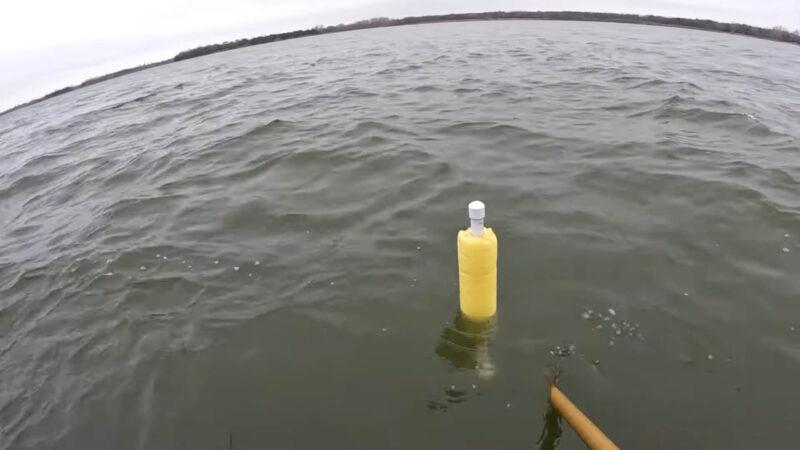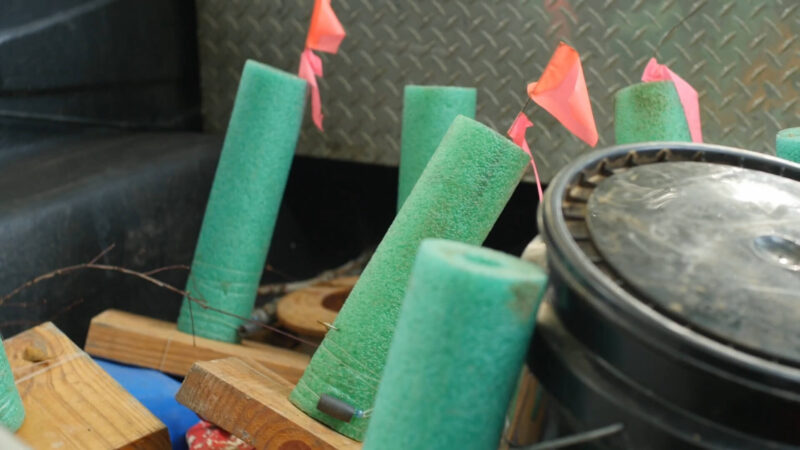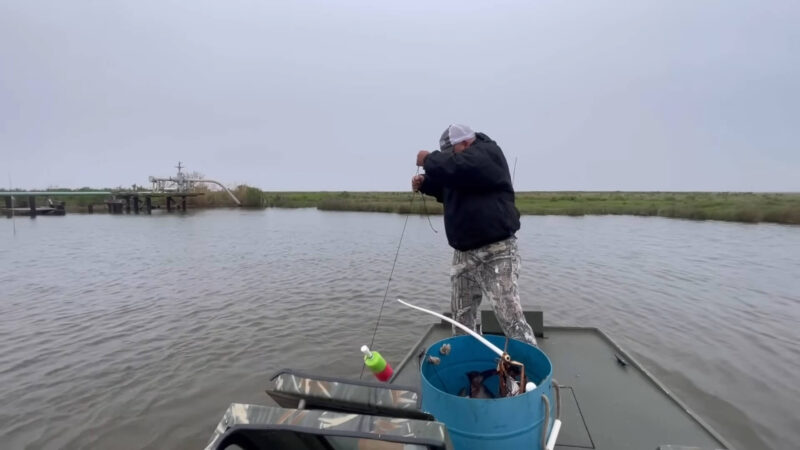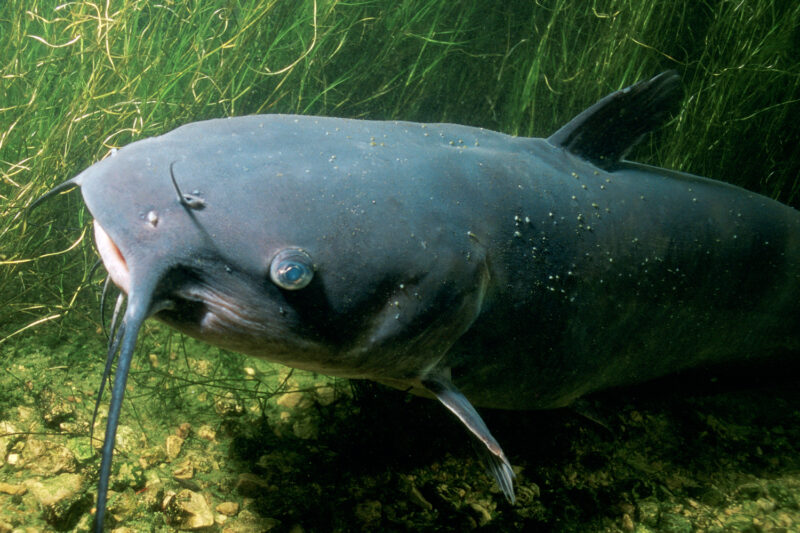Jug fishing is as basic as it gets. You take jugs—plastic soda bottles, bleach containers, whatever floats—and attach a line, weight, and hook. Drop the jugs in the water, and wait. When a fish bites, the jug bobs or races off.
If you’re ready to learn jug fishing like a pro, this guide will get you there.
What Is Jug Fishing?

Jug fishing is as basic as it gets. You take jugs—plastic soda bottles, bleach containers, whatever floats—and attach a line, weight, and hook. Drop the jugs in the water, and wait. When a fish bites, the jug bobs or races off.
It’s an effective, no-nonsense method to catch fish, especially catfish (one of the species you can find in El Salto Lake). This technique covers more area than regular rod fishing and requires less constant attention.
Essential Gear for Jug Fishing

You need the right gear for jug fishing. Without it, you’re just wasting time. Here’s a quick list of what’s essential:
- Jugs: Use brightly colored, visible jugs. Plastic soda bottles, bleach jugs, or pool noodles with PVC work great.
- Line: Get a 50 to 65-pound test line. You don’t want a big fish breaking off.
- Hooks: Circle hooks are your best bet. They catch fish in the corner of the mouth, making it easier to release.
- Weights: Use a 1- to 2-pound weight for anchored jugs. Smaller weights work for free-floating jugs.
- Bait: Catfish love strong-smelling bait. Chicken liver, stink bait, and cut bait like shad are all great options.
Setting Up Your Jug Lines
You’ve got your gear. Now it’s time to set it up. It’s not complicated, but you’ve got to get it right. Follow these steps:
- Choose the Jug: Any sturdy, sealable plastic jug will work. Bright colors help you spot them easier.
- Decide the Line Length: Adjust the length depending on the water depth. Catfish tend to stay near the bottom, so aim to keep your bait a few feet off the bottom.
- Attach the Hook and Weight: Fasten your weight at the bottom, and attach the hook a few inches above. Circle hooks work best, sizes 2/0 to 7/0 depending on the fish size.
- Deploy the Jugs: Spread the jugs out, around 50 yards apart in open water, or stagger them around structures like rocks or submerged trees.
Anchored vs. Free-Floating Jug Fishing
There are two main methods in jug fishing: anchored and free-floating.
Anchored Jug Fishing
Anchored jugs stay in one place, held by a weight. This method is good for areas with lots of structure, like rocks or drop-offs where fish hide. Set your jug where you think fish are feeding, and leave it. The downside? If fish aren’t in the area, you’re out of luck.
- Best for: Lakes or slow-moving rivers.
- Key benefit: Prevents jugs from drifting too far.
- Drawback: Limited to one location.
Free-Floating Jug Fishing
Free-floating jugs drift with the current. This method covers a larger area and is great for rivers. Just keep an eye on your jugs so they don’t drift too far.
- Best for: Rivers and large lakes.
- Key benefit: Covers more water.
- Drawback: You can lose jugs if you’re not paying attention.
Where to Place Your Jugs
Location is everything. Knowing where to drop your jugs can make or break your fishing trip. Here’s where to focus:
- Structure: Catfish love hiding near underwater structures like rocks, fallen trees, and drop-offs. Set your jugs nearby for better results.
- Current Seams: In rivers, catfish often hang out in slower-moving water near faster currents. Place your jugs on the edges of these current seams.
- Vegetation and Cover: Catfish hide in weed beds and submerged logs. These areas provide food and shelter, making them prime spots for your jugs.
Bait Selection
Choosing the right bait is key to attracting catfish. Catfish rely on their sense of smell more than sight, so strong-smelling baits are a must. Here are some effective options:
- Live Bait: Minnows and worms work well, especially for smaller catfish.
- Cut Bait: Shad or bluegill cut into pieces are effective for larger catfish.
- Chicken Liver: A classic catfish bait. It’s smelly and cheap, making it perfect for jug fishing.
- Stink Bait: Manufactured stink bait has strong odors that attract catfish from a distance.
Is It Legal Everywhere?
Before you head out, you need to check the local fishing regulations. Every state has different laws about how many jugs you can use and where you can fish. Here are some key points:
- Jug Limits: Some states limit the number of jugs you can deploy. For example, Kentucky allows 50 jugs, while other states limit you to just 5.
- Hook Limits: Many states restrict the number of hooks per jug, often 1 to 3.
- Tagging Jugs: In some states, you must write your name and address on each jug for identification.
- Check Times: Most states require you to check your jugs regularly, usually every 24 hours.
Monitoring and Retrieving Your Jugs
You’ve set your jugs, but the work’s not done yet. You need to monitor and retrieve them properly to make sure you get your catch and don’t lose gear. Here’s how to stay on top of things:
- Check Regularly: Keep an eye on your jugs. In calm water, check them every 30 minutes to an hour. In rivers, where jugs can drift, check more frequently.
- Jug Line Alarms: Consider using a jug line alarm system. These devices alert you when a jug goes under, so you don’t have to keep watching constantly.
- Reel in Carefully: When retrieving, approach the jug quietly. Pull the line in smoothly and quickly to set the hook if the fish hasn’t already.
Additional Tips

Here are some no-nonsense tips that will up your jug fishing game:
- Use Bright Jugs: Bright colors like orange or chartreuse make your jugs easier to spot in the water.
- Spread Out: Don’t bunch your jugs together. Spread them out to cover more area and increase your chances of catching fish.
- Fish at Night: Catfish are most active from dusk to dawn. Set your jugs before sunset, and check them early in the morning.
- Stay Legal: Always check local regulations before you head out. Fines for breaking the rules can ruin your day.
- Use Heavy Line: A 50- to 65-pound line will handle larger catfish without breaking.
- Monitor the Weather: Wind and currents can move free-floating jugs quickly. Keep an eye on weather conditions to avoid losing jugs.
Stay Safe
Safety is key when you’re out on the water. Follow these tips to stay safe while jug fishing:
- Wear a Life Jacket: Especially in rivers with strong currents, a life jacket can save your life.
- Stay Alert: Watch out for boats and other watercraft. Jugs can drift, and you don’t want to be caught off guard.
- Don’t Retrieve in Dangerous Areas: If a jug gets snagged near a dangerous area, like rapids or submerged rocks, let it go. It’s not worth the risk.
FAQs
What Is the Best Time of Year for Jug Fishing?
The best time for jug fishing varies depending on your location and the type of fish you’re targeting. For catfish, which is the most common target, warmer months from late spring through early fall tend to be ideal.
Catfish are more active during these times, making them easier to catch. Early morning and late evening hours are also great as catfish are most likely to feed during these periods. However, winter jug fishing can work too, especially in southern regions where waters remain relatively warm.
Can You Use Multiple Hooks on One Jug Line?
Yes, you can use multiple hooks on a single jug line, but it depends on your state’s regulations. Some states allow several hooks per line, while others limit you to just one.
Multiple hooks can increase your chances of catching fish at different depths, but you must check local fishing laws before setting up your jugs. In some areas, using more than one hook per jug might be illegal, so always verify to avoid fines.
How Do You Prevent Losing Jugs?
Losing jugs is a common problem, especially when free-floating. To prevent this, use brightly colored jugs that are easy to spot in the water. Adding reflective tape can make them visible at night. Another tip is to attach a small flag or marker that helps track jugs from a distance.
Some anglers also use GPS locators on their jugs to find them if they drift far off. Keep an eye on the weather too. Strong winds or currents can carry your jugs far away quickly.
What Types of Fish Can You Catch With Jug Fishing?
While jug fishing is mostly associated with catching catfish, you can catch other species as well. Freshwater drum, gar, and even bass can be hooked using jug lines, depending on your bait and fishing location.
The method is effective for bottom-feeding fish, but if you use live bait, you may attract different species. Just ensure you are following local rules about the types of fish you can legally target using jugs.
How Often Should You Check Your Jug Lines?
Jug lines should be checked frequently, especially if you’re free-floating. It’s recommended to check every 30 minutes to an hour to avoid missing bites or losing jugs. In stationary setups, checking every couple of hours might be enough.
Fish can move jugs far from their original positions, so keeping a close watch ensures you don’t lose any gear or fish.
Last Words
Keep your setup simple. Don’t overthink it. If you’re out there on the water, focus on your jugs and your catch. Jug fishing might seem old school, but it’s effective, and that’s all that matters.
Now, grab your gear, head to the water, and get to work. No one’s going to catch those fish for you.

